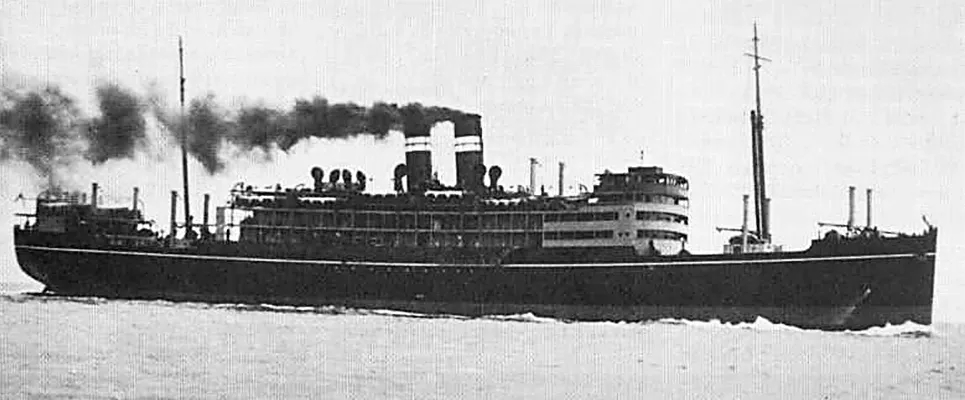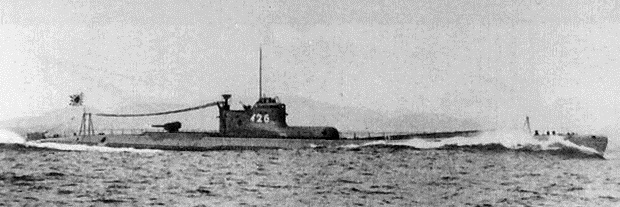In the vast expanse of the Indian Ocean lies a shipwreck shrouded in history – the SS Tilawa. Often dubbed the “Indian Titanic,” this passenger liner met a watery demise in 1942, leaving behind a legacy of loss and a recent legal battle over a treasure trove of silver.
Its story, however, transcends the sensational and delves into the complexities of war, human resilience, and the enduring allure of forgotten tragedies.
From Grand Designs to Bustling Voyages
Launched in 1924 by the British India Steam Navigation Company, the SS Tilawa was a marvel of its time. Built at the Hawthorn Leslie & Company shipyard in England, it boasted a sleek design and impressive specifications.
At 10,006 gross registered tons (GRT), the Tilawa steamship stretched over 451 feet (138 meters) and featured three elegant decks. Its opulent cabins and spacious public areas catered to over 3,200 passengers, with separate sections for first, second, and third class.

The Tilawa quickly became a mainstay on the bustling India-East Africa route, ferrying a diverse mix of travelers – colonial officials, merchants, families seeking new opportunities, and leisure passengers yearning for exotic adventures.
A World at War: The Tilawa’s Unexpected Role
As the dark clouds of World War II gathered, the Tilawa’s role transformed.
Passenger traffic dwindled, and the once-festive atmosphere gave way to a more utilitarian purpose.
In November 1942, the ship embarked on a fateful journey from Mumbai, carrying not just passengers but also a critical wartime cargo.
The hold of the Tilawa now housed a precious commodity—2,364 silver bars destined for the South African mint. This silver, valued at over £34 million ($43 million) in today’s terms, was intended to be transformed into coins to bolster the South African economy during the war effort.
A Torpedo’s Embrace: A Night of Terror and Loss
On a calm November 23rd, 1942, the serenity of the voyage was shattered.
The unsuspecting Tilawa, cruising roughly 930 miles northeast of the Seychelles Islands, was targeted by the Imperial Japanese Navy submarine I-29.

Two torpedoes struck the vessel in quick succession, tearing gaping holes in its hull.
Panic erupted as the Tilawa began its descent. Lifeboats were hurriedly launched, but the chaos and sheer number of passengers on board made evacuation a desperate struggle.
A Glimmer of Hope Amidst the Devastation
Fortunately, two nearby vessels, the British cruiser HMS Birmingham and the civilian freighter SS Carthage, responded to the distress signals.
In a heroic rescue effort, they managed to pull over 678 survivors from the churning water. However, the tragic toll was immense.
An estimated 280 souls perished in the sinking, with many succumbing to drowning, hypothermia, or injuries sustained during the chaotic evacuation.
A Forgotten Tragedy: The Long Shadow of Loss
The sinking of the SS Tilawa remains a lesser-known chapter of World War II.
The focus on larger battles and theaters of war often overshadows personal tragedies like this. Yet, for the families who lost loved ones – fathers, mothers, children, siblings – the impact was profound.
So this was aired today by the ITV News…my dad…the only known survivor of the SS Tilawa History Page… This is a forgotten story known as the "Indian Titanic" and it is a story that needs to be seen and heard…it is a huge part in maritime history.. https://t.co/Bg0SabHyok pic.twitter.com/WbxFFggtd8
— Pallavi40 (@Pallavi401) October 28, 2022
The Tilawa carried not just passengers but also stories, dreams, and aspirations. Their loss left a gaping hole in the lives of those left behind.
Unearthing the Past: A Modern Twist to the Tale
In December 2017, a twist of fate brought the Tilawa back into the spotlight.
A British exploration company, Argentum Exploration, utilizing advanced underwater technology, located the wreck and successfully retrieved the lost silver bars.
However, their claim to the treasure sparked a legal battle.
South Africa, asserting ownership of the intended coinage, challenged Argentum Exploration’s salvage rights.
A Battle of Legality: Who Owns History?
The legal battle hinged on a seemingly simple question: Was the silver considered “in use” for commercial purposes at the time of the sinking?
The UK Supreme Court, in a landmark decision, ruled in favor of South Africa.
The court reasoned that simply transporting the silver didn’t constitute commercial use. This decision sets a precedent for future disputes regarding ownership of wartime treasures, highlighting the complex legal issues surrounding salvaged artifacts.
The SS Tilawa: A Legacy That Endures
The SS Tilawa’s story is more than just a maritime disaster. It’s a poignant reminder of the human cost of war, the enduring value of history, and the resilience of the human spirit.
As technology allows us to delve deeper into the ocean’s secrets, the legacy of shipwrecks like the Tilawa continues to surface, reminding us of the triumphs and tragedies of the past.










COMMENTS
You must become a subscriber or login to view or post comments on this article.